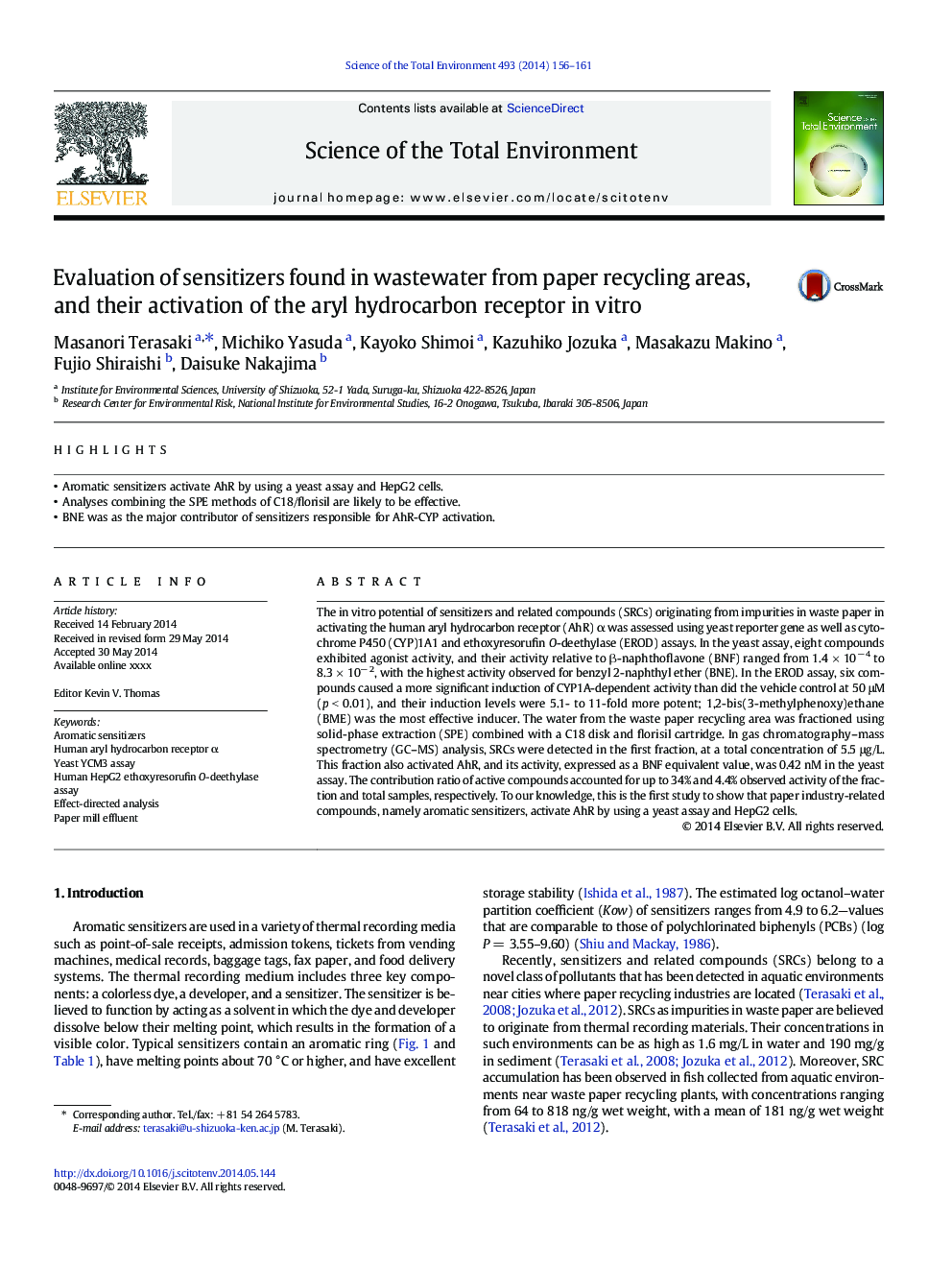| Article ID | Journal | Published Year | Pages | File Type |
|---|---|---|---|---|
| 6329597 | Science of The Total Environment | 2014 | 6 Pages |
Abstract
The in vitro potential of sensitizers and related compounds (SRCs) originating from impurities in waste paper in activating the human aryl hydrocarbon receptor (AhR) α was assessed using yeast reporter gene as well as cytochrome P450 (CYP)1A1 and ethoxyresorufin O-deethylase (EROD) assays. In the yeast assay, eight compounds exhibited agonist activity, and their activity relative to β-naphthoflavone (BNF) ranged from 1.4 Ã 10â 4 to 8.3 Ã 10â 2, with the highest activity observed for benzyl 2-naphthyl ether (BNE). In the EROD assay, six compounds caused a more significant induction of CYP1A-dependent activity than did the vehicle control at 50 μM (p < 0.01), and their induction levels were 5.1- to 11-fold more potent; 1,2-bis(3-methylphenoxy)ethane (BME) was the most effective inducer. The water from the waste paper recycling area was fractioned using solid-phase extraction (SPE) combined with a C18 disk and florisil cartridge. In gas chromatography-mass spectrometry (GC-MS) analysis, SRCs were detected in the first fraction, at a total concentration of 5.5 μg/L. This fraction also activated AhR, and its activity, expressed as a BNF equivalent value, was 0.42 nM in the yeast assay. The contribution ratio of active compounds accounted for up to 34% and 4.4% observed activity of the fraction and total samples, respectively. To our knowledge, this is the first study to show that paper industry-related compounds, namely aromatic sensitizers, activate AhR by using a yeast assay and HepG2 cells.
Related Topics
Life Sciences
Environmental Science
Environmental Chemistry
Authors
Masanori Terasaki, Michiko Yasuda, Kayoko Shimoi, Kazuhiko Jozuka, Masakazu Makino, Fujio Shiraishi, Daisuke Nakajima,
